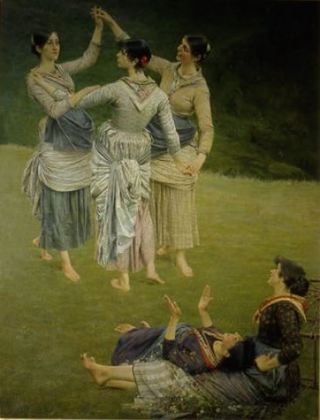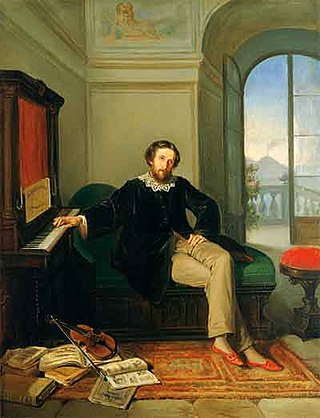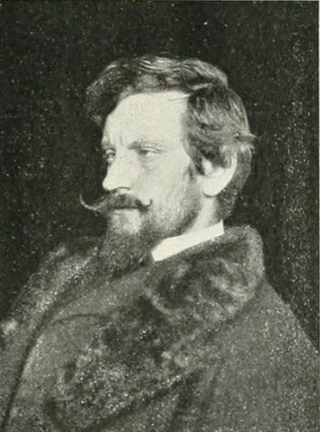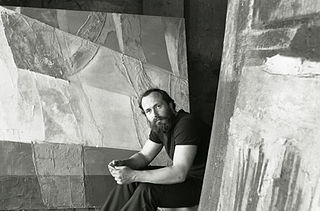
(date unknown)

Tullo Golfarelli (24 June 1852, Bologna - 30 March 1928, Bologna) was an Italian sculptor and painter.


Tullo Golfarelli (24 June 1852, Bologna - 30 March 1928, Bologna) was an Italian sculptor and painter.
He was born to Enrico Golfarelli, a goldsmith, and his wife Vittoria, née Bassoli. His father introduced him to the techniques of engraving and metalworking, and he attended technical schools from 1864 to 1867. [1]
In 1875, thanks to a subsidy from the municipality of Cesena, he was able to move to Rome, where he worked in the studios of a sculptor named Gagliardi. [2] In 1880, he moved to Naples to have some additional training with Domenico Morelli and Filippo Palizzi. [3] The following year he applied for admission to the Academy of Fine Arts, but was unsuccessful. [4]
In addition to his formal studies, his friendship with Vincenzo Gemito encouraged his inclinations toward Realism. Frequent travels enabled him to acquire commissions throughout Italy. By the end of the 1880s, he had become part of the Bolognese cultural circle, where he formed life-long relationships with Giosuè Carducci and Giovanni Pascoli. [4] Always striving to improve his technique, he worked with Salvino Salvini at the Academy of Fine Arts of Bologna. [2]
During the 1880s and 1890s, he competed in numerous competitions for sculptures and monuments. Notable ones include Giuseppe Garibaldi, to be placed in Perugia (1885), and Christopher Columbus, destined for New York City (1890). Both commissions went to other competitors. His largest project involved ten monuments at the Certosa di Bologna, which were created during the 1890s and 1900s.
From 1887 to 1893, he was a teacher at the "Professional School of Decorative Arts" and was named an honorary member of the academy. In 1902, he married Zaira Petrini (1868-1948), with whom he would have two sons. [1] The following year, he became a Knight of the Republic of San Marino. In 1912, he was appointed a professor at the academy; a position he held until 1921. By January 1923, his failing health had forced him to give up all of his academic positions, leaving him with severe economic problems. He spent his final years in isolation. [2]

Bernardo De Dominici or Bernardo de Dominici or Bernardo de' Dominici (1683–1759) was an Italian art historian and minor landscape and genre painter, active mainly in his native Naples. He is now best known as the author of the Vite dei pittori, scultori ed architetti napoletani, a three-volume collection of biographies of Neapolitan artists, for which he is sometimes called the Vasari of Naples.

Cincinnato Baruzzi was an Italian sculptor and professor of the same subject at the Accademia di Belle Arti of Bologna from 1831 to 1859.
Bartolommeo Morelli also called il Pianoro, was an Italian painter from the baroque period, active mainly in quadratura and frescoes. He was a pupil of Francesco Albani in Bologna. His main work in Bologna were frescoes in the chapel of the Pepoli Family in San Bartolommeo di Porta. Malvasia refers to him as Bartolommeo Pianoro, who was also active in Genova at the same time as Andrea Sghizzi, another pupil of Albani.

Salvino Salvini was an Italian sculptor; best known for his grave monuments.

Filadelfo Simi was an Italian painter and sculptor.
Augusto Sezanne was an Italian painter, active in a Naturalist style of landscape painting. He also worked as engraver, ceramist, and even as architect.

Luigi Busi was an Italian painter born in Bologna.
Giovanni Piancastelli was an Italian painter and architect.

Vincenzo Pasquale Angelo Petrocelli was a Neapolitan artist. Petrocelli was born in Cervaro in the Kingdom of the Two Sicilies. He studied under Domenico Morelli, and was active as a painter from about 1850. He was principally a history painter, but also painted portraits and genre scenes. His sons Achille and Arturo were both painters.
Angelo Minghetti (1822–1885) was an Italian ceramist and painter of maiolica pieces.

Alfredo Luxoro (1859–1918) was an Italian painter, mainly of landscapes, genre, and orientalist themes.

Salvatore Pisani was an Italian sculptor.

Giovanni Scarfi was an Italian sculptor.
Roberto Rasinelli was an Italian painter, mainly painting landscapes and genre scenes, in oil and watercolor. He often painted his landscapes on site, outdoors.

The Palazzo della Compagnia dell'Arte dei Brentatori is a medieval palace located on Via de' Pignattari #11, starting at the Piazza Maggiore and running alongside the basilica church of San Petronio. It presently functions as the Hotel Commercianti, and a hotel at the site has existed for over a century.

Mario or Marius de Maria was an Italian painter, known for depicting nocturnal landscapes, and gaining the label by the contemporary poet Gabriele D’Annunzio, as the painter of moons.
Ercole Drei was an Italian sculptor. His work was part of the sculpture event in the art competition at the 1932 Summer Olympics.

Nicola Zamboni was an Italian sculptor.
Michele Guerrisi was an Italian sculptor, painter and writer.

Enrico Barberi was an Italian sculptor.